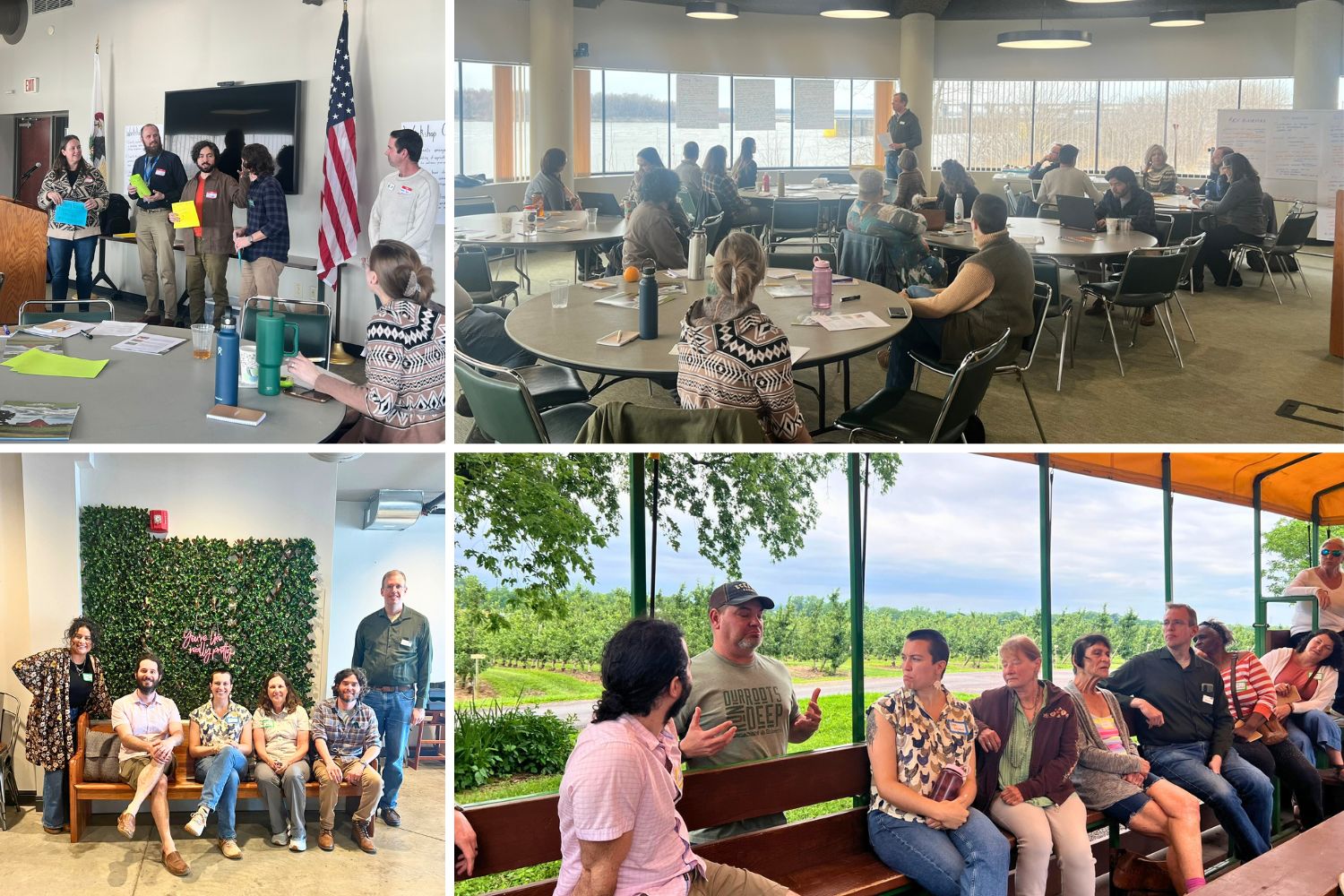Storytelling and Sustainability: Merging Art with Nature-Based Farming Solutions

Growing up, I spent a lot of time with my grandfather, working in his vegetable garden and talking for hours. He was a natural storyteller, and I loved listening to him as we grew our own food. Through him, my love of nature blossomed, cultivating my passion for the environment and instilling in me the values of sustainability and organic farming. These formative moments set me on the path of working with American Farmland Trust (AFT), where I honor my grandfather’s lessons by protecting farmland, promoting sound farming practices, and keeping farmers on the land.
Recently, our Midwest American Farmland Trust regional team collaborated with America’s Watershed Initiative and Illinois Humanities, participating in workshops focused on nature-based solutions– an approach that incorporates natural features and processes to protect, conserve, or restore landscapes. The two workshops focused on nature-based solutions to address extreme weather and were a unique blend of art, science, and storytelling designed to engage diverse audiences to stand for holistic solutions.
Workshop 1: Collaboration and Communication

The first workshop, held at the National Great Rivers Research and Education Center in Alton, Illinois, brought together a diverse group of professionals from farming, communication, and agricultural backgrounds. Together, we identified our target audience, how we should craft ideas for that audience, and what solutions had the potential to be the most impactful.
The group identified elected officials as one key audience, recognizing their ability to create policies that promote nature-based solutions. After more thought collaboration, we decided that field days or demonstration plots—especially ones that feature cover crops as they help retain topsoil during precipitation events—would be an effective way to showcase nature-based solutions to educate these policymakers. We also discussed incentivizing the purchase of local meat and vegetables to diversify crop systems and incorporate nature-based solutions into farming practices.
Workshop 2: Art as a Catalyst for Change
The second workshop invited local artists to collaborate and discuss their creative process, individual projects, and how to incorporate nature-based solutions into their current or future artwork and artistic expressions. Azlan Smith, a PhD candidate at the University of Illinois, developed three sessions for the workshop attendees. Session one sets the context on how artists feel about their artwork and the current state of mainstream art. This was followed by a wagon tour of a local orchard to see sustainable agriculture practices in action.

The second session provided time for the attendees to rotate to different stations that covered funding opportunities for artwork and art-related projects, a deeper conversation and explanation of nature-based solutions in agriculture, and an ideation group to create local opportunities for artistic collaboration. The final session of the day focused on working through creative blocks. The group shared personal hurdles they face and how they move past them. The group also discussed potential blocks or challenges they may face when wanting to incorporate nature-based solutions into their artwork, such as difficulty securing funding or difficulty finding locations to showcase their work. Sharing these personal experiences cultivated a collaborative environment that allowed the group to start creating their art.
The Power of Storytelling and Art
Being part of these workshops was particularly meaningful to me, evoking the memories of my grandfather’s storytelling in the garden. Just as he used stories to teach me about nature, these artists can use their art to teach others about threats to our environment and drive impactful change. These workshops highlighted the importance of integrating the arts into environmental education. By bridging scientific and communication-focused ideas with creative expression, we can successfully create awareness of natural solutions to extreme precipitation. In doing so, we have established a network for artistic collaboration.
My time with America’s Watershed Initiative and Illinois Humanities has reaffirmed my belief in the power of storytelling. Whether conveyed through words or art to inspire and educate, storytelling is critical for the work that we do. It was an exciting and enriching experience, and I am eager to incorporate the insights I gained into my work at AFT.
At American Farmland Trust, we are dedicated to advancing innovative approaches and continuing the legacy of sustainability that my grandfather instilled in me. Together, through the power of storytelling and art, we can inspire change and build a more resilient future for our farmlands and communities.
For more information on the organizations that supported this project, visit American Farmland Trust, America’s Watershed Initiative, and Illinois Humanities.

